In Mission: Wanderlust, I write and podcast about our family’s travel adventures and the things that we have learned along the way.
My plan to stop in Harpers Ferry stemmed from a few goals. First, it gave us an easy camping sticker in West Virginia and I didn’t know when we would be able to visit again. Second, it gave us one last NPS site for our vacation, and since I didn’t get to see Acadia, a national historical site would have to do. Third, it was a chance to see a place I had never been before and immerse our family in important American history.
And despite the campground struggles upon our arrival in West Virginia, our visit to Harpers Ferry was everything I could have asked for and more.
By the time we left the drama of the campground behind us, we were hungry and needed a place to explore. We found our way to the main street in Harpers Ferry and looked for a place to park, but parking spots close to the sites were hard to find. We drove to the visitor center to get brochures and information on the park and found out that the trolleys would be running later than usual due to delays. That meant we would have plenty of time to take the trolley down to the historic town, eat some dinner, and still explore a little before we had to be on the last trolley back up the hill.
We ate an early dinner at the Coach House Bar and Grill and then walked down High Street to check out the mouth-watering sweets at True Treats, a store with historic candies from the decades and even centuries. It truly does have nearly every kind of historic American candy you could possibly want and a movie “theater” in the back that shows classic cartoons on a loop. During our two days in Harpers Ferry, we made a couple trips back to the shop to make sure that we got everything that we wanted from there.
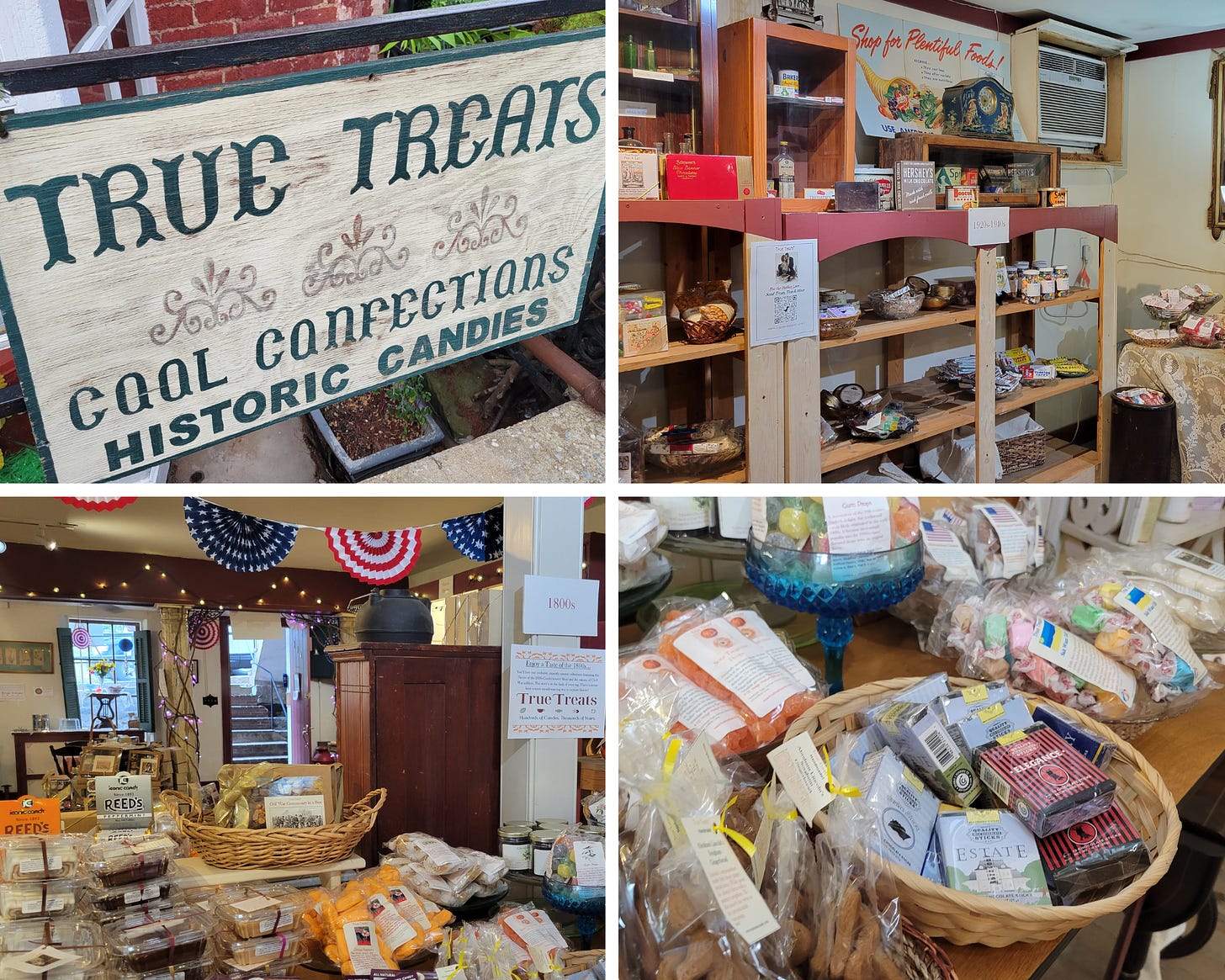
Next we headed to the Harpers Ferry train depot and the monument marking John Brown’s Raid, a symbolically important moment of pre-Civil War history because it highlighted the likelyhood that the question of slavery would not be solved peacefully. At the time, Harpers Ferry was home to the National Armory and Arsenal, which John Brown and the people he recruited raided in an attempt to collect arms that could be then used in an abolitionist uprising. While this wasn’t the final straw as our country approached Civil War, it certainly played a role in the growing conflict between the North and the South. Seeing the town and reading the history brought the event home in a way that the brief mention in my history books from high school and college had not.
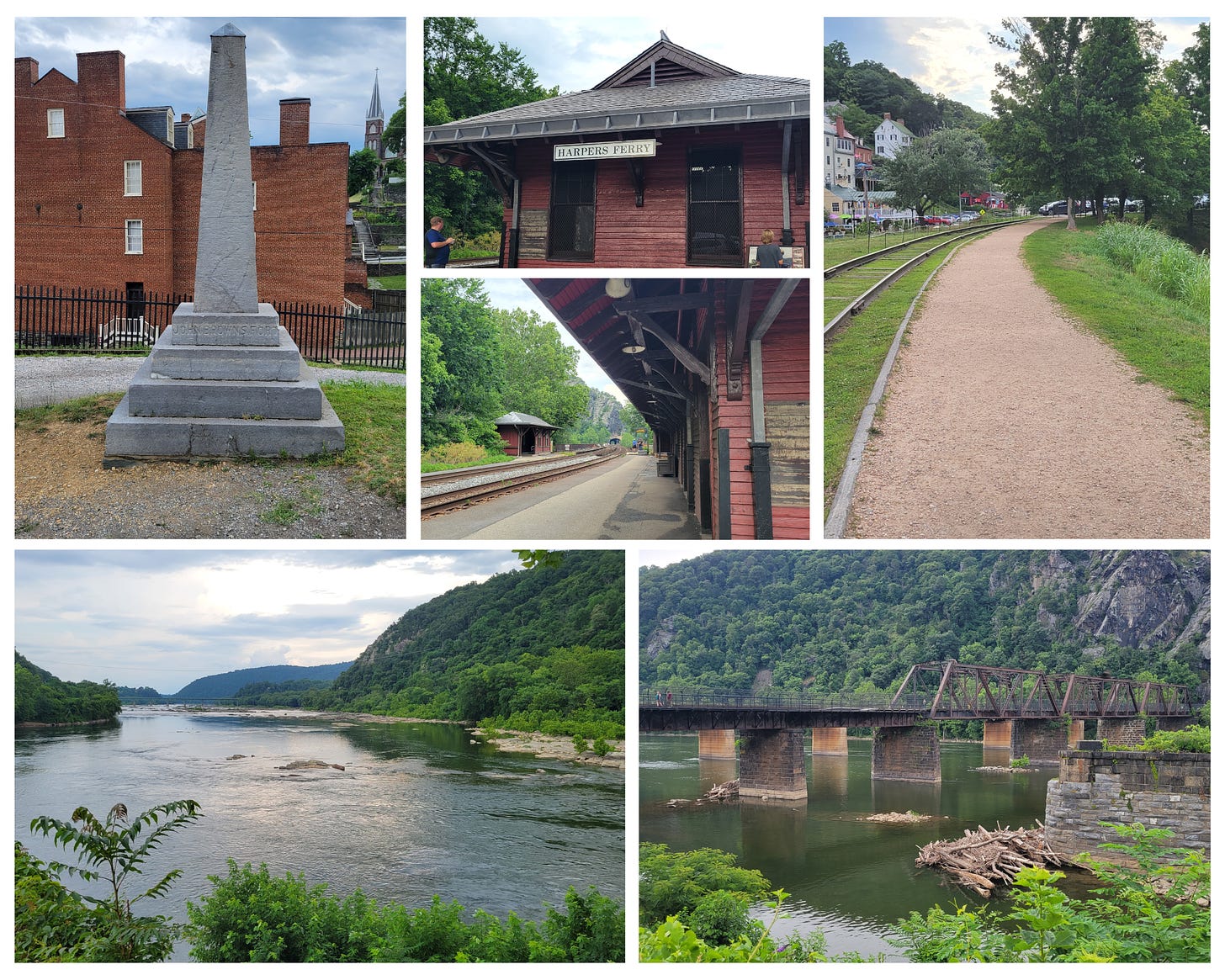
We called it a night and agreed that we would explore the park more the next day. I woke up ready to do just one of the many hikes available in the area, even though I knew we were working against the clock to beat the mid-summer heat and humidity of West Virginia. By the time we arrived back at the visitor center, the temperatures were already climbing toward uncomfortable, but I dragged my family on the Murphy-Chambers Farm Trail, a relatively moderate 2-mile trail that starts at the visitor center. No, it was not the most exciting trail in the world, but the Shenandoah River overlook gave me a stunning view of the river and now I could say that we really did “all the things” on our vacation.

Once we returned to the visitor center, we took the trolley down the hill to the historic town. Our first stop was a walk along the river. The kids and I ditched our shoes and walked right in to the slow current, eager to cool our legs in the Shenandoah.
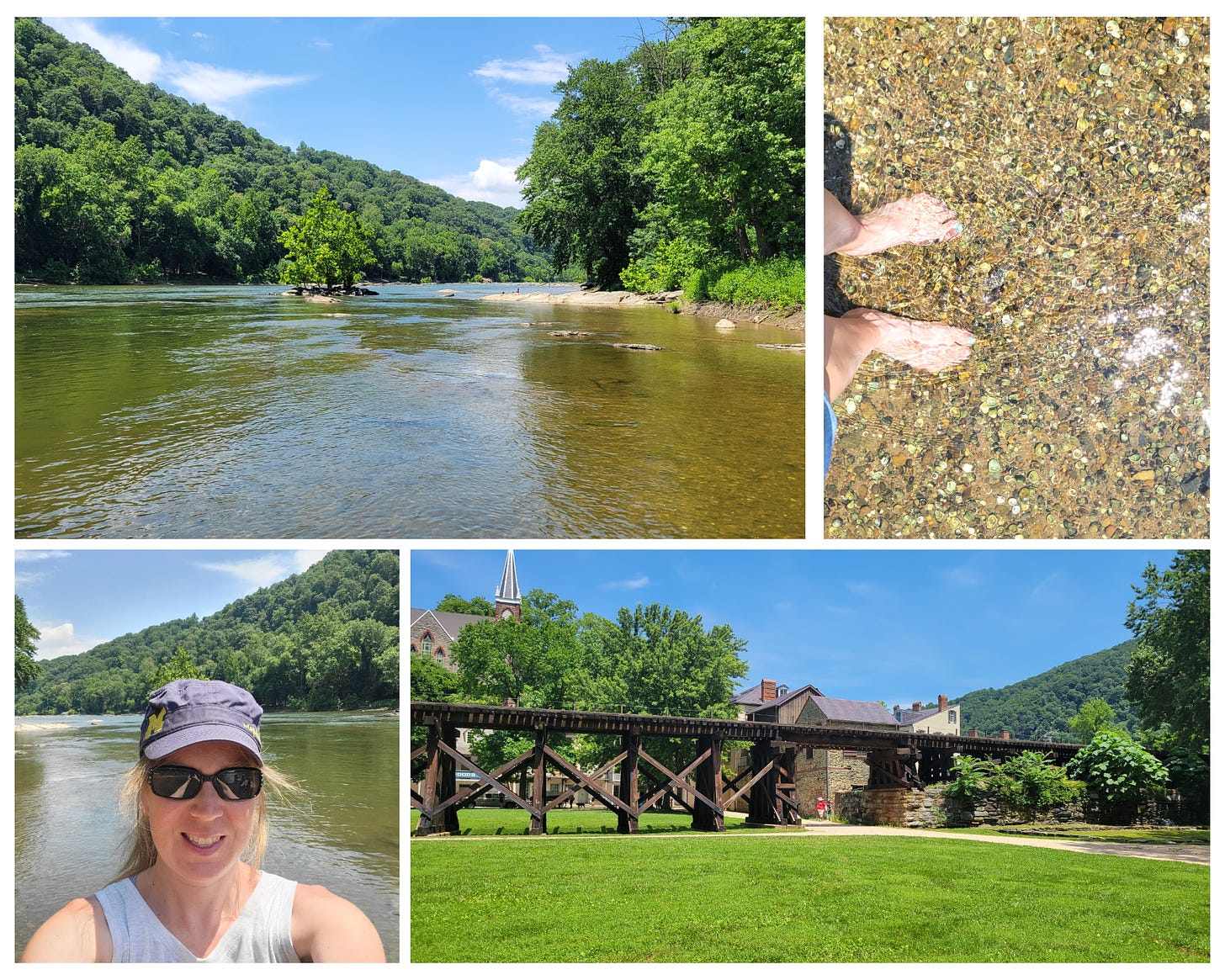
It was Fourth of July weekend and the living history people were out in full force. We stopped at the national park gift shop and then explored the many buildings on our way to finding a new place to eat lunch. We enjoyed the lessons each building offered and the exhibits the park had on display for a special weekend.
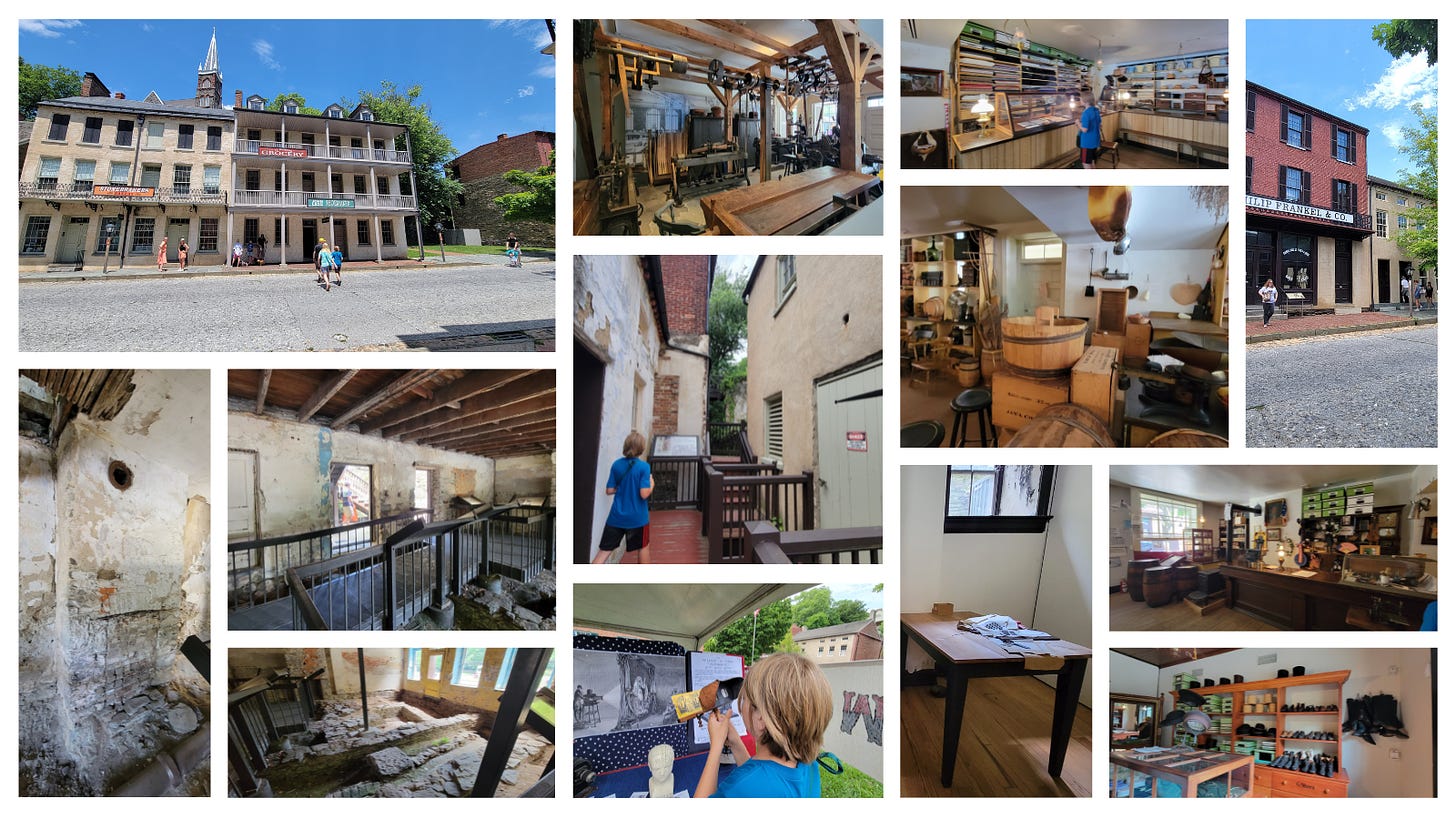
After a very warm hike and building tours, we needed lunch and ventured to another local eatery, this time stopping at Cannonball Deli. We were not disappointed (I think it is safe to say that our entire family would highly recommend it) and got some additional entertainment watching the hikers taking a break from the Appalacian Trail to get some cooked food prepared by someone else.
In fact, we saw a lot of Appalacian Trail hikers while we were in town, many of them using Harpers Ferry as a place to sleep in a bed, eat a meal, and stock up on additional supplies before heading back on the trail. One of the women we talked with in the deli said she had been on the trail for six months and had been writing about the experience for a job. It was one more thing that we learned about the small town before we finished exploring.
I had a few more stops from the NPS brochure that I wanted to see, so we headed straight up a set of old, uneven steps to St. Peter’s Roman Catholic Church, which has served the community since 1833
I then headed up the steep stairs to Jefferson Rock, stopping to check out the burned ruins of St. John’s Episcopal Church.
My final stop before we headed back to our camper was Jefferson’s Rock, named after Thomas Jefferson because of his description of the region after standing in that scenic vantage point. It is a beautiful spot to see most of the surrounding region, and while the rest of my family didn’t join, I’m glad I went to the top.
Harpers Ferry was a last minute decision when our summer plans changed, but it was a beautiful place to stop, explore, and learn more of our complicated national history. While there are more places in the region we could have visited had we been there longer, we found that two nights was all we needed to see what we wanted of the historical town frozen in time.
The YouTube summary of our trip to Harpers Ferry can be found here:
Please “like” by clicking on the ❤ and share this post with your friends so that others can join me on the journey.




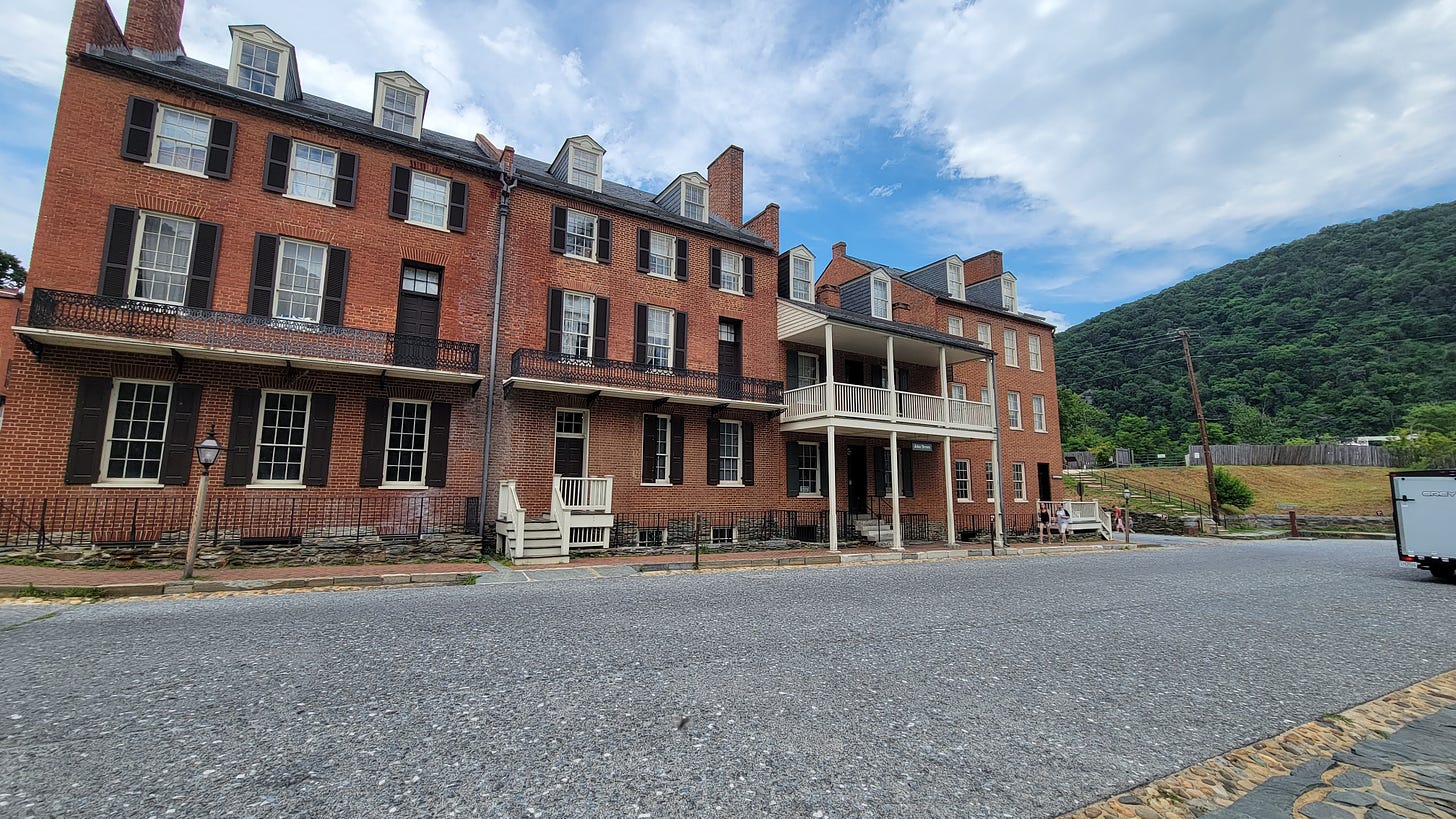
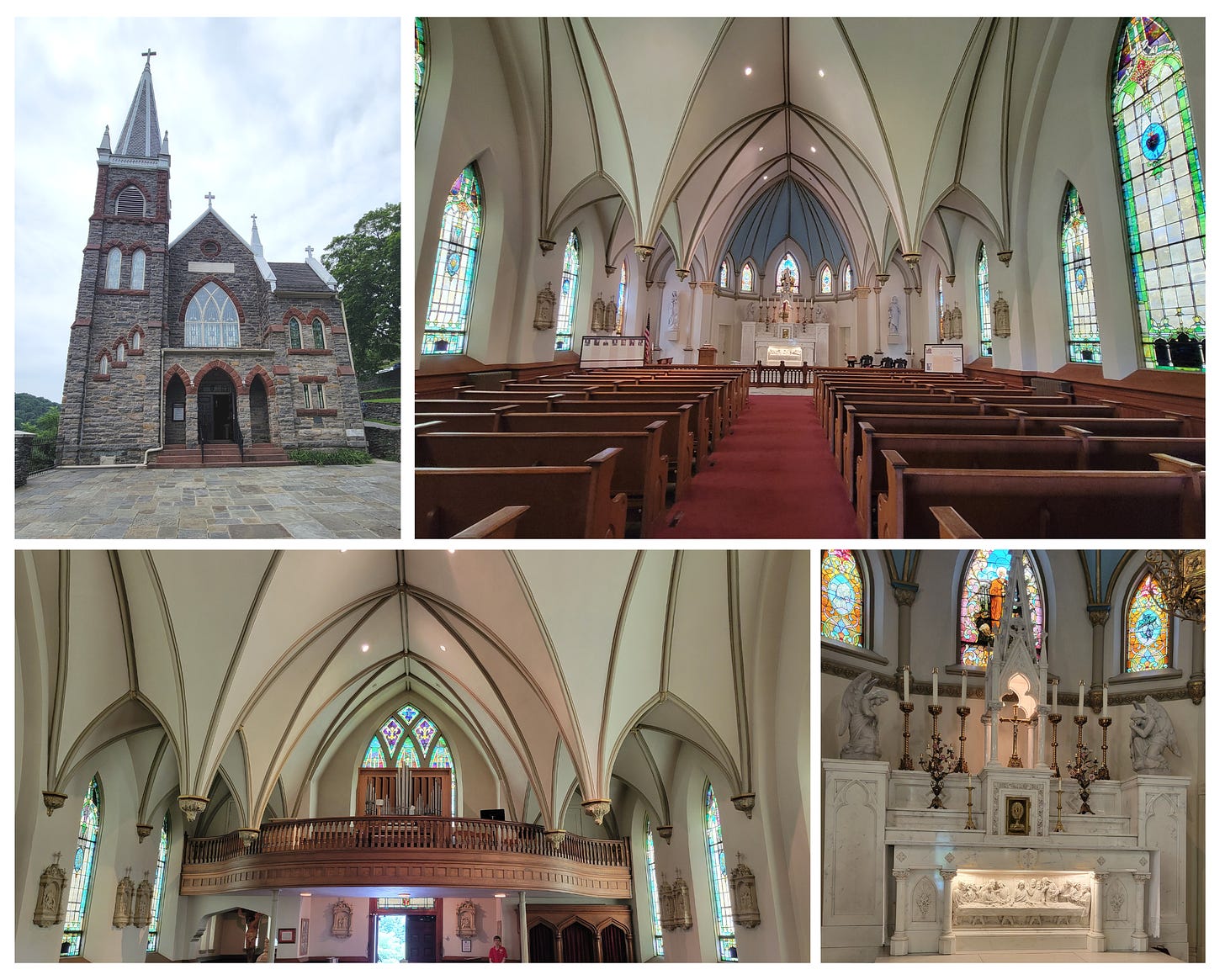
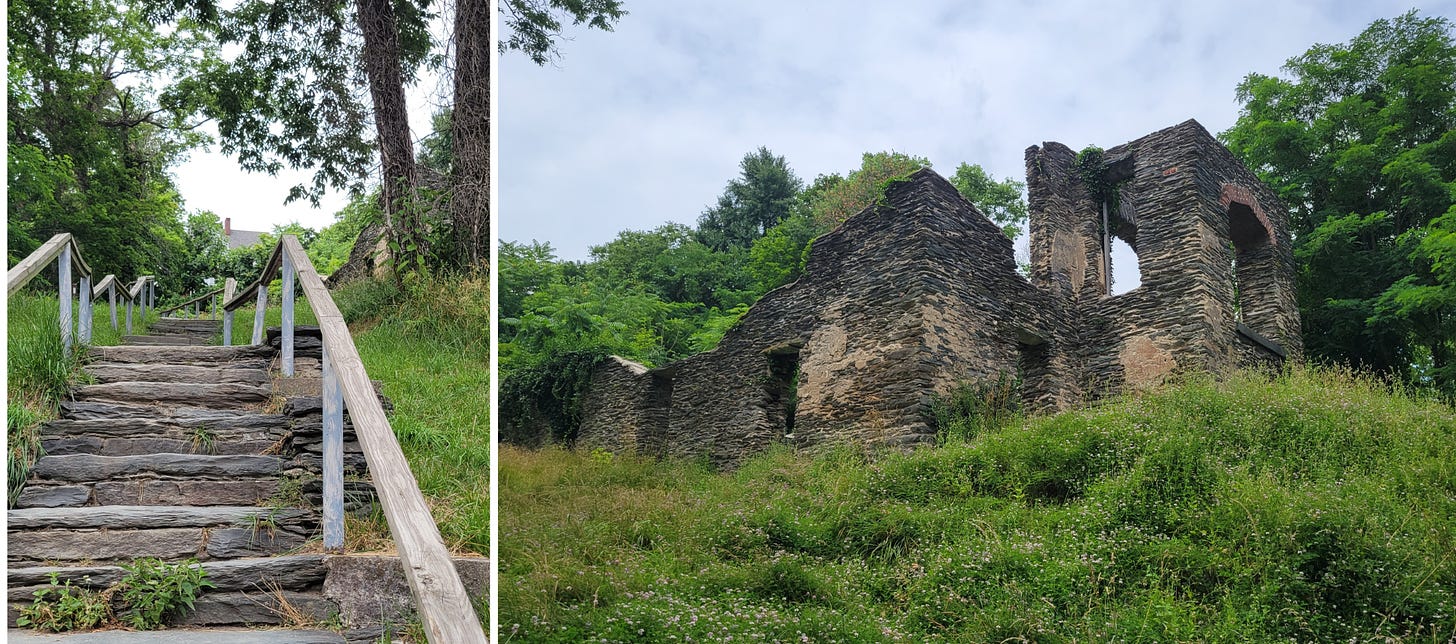
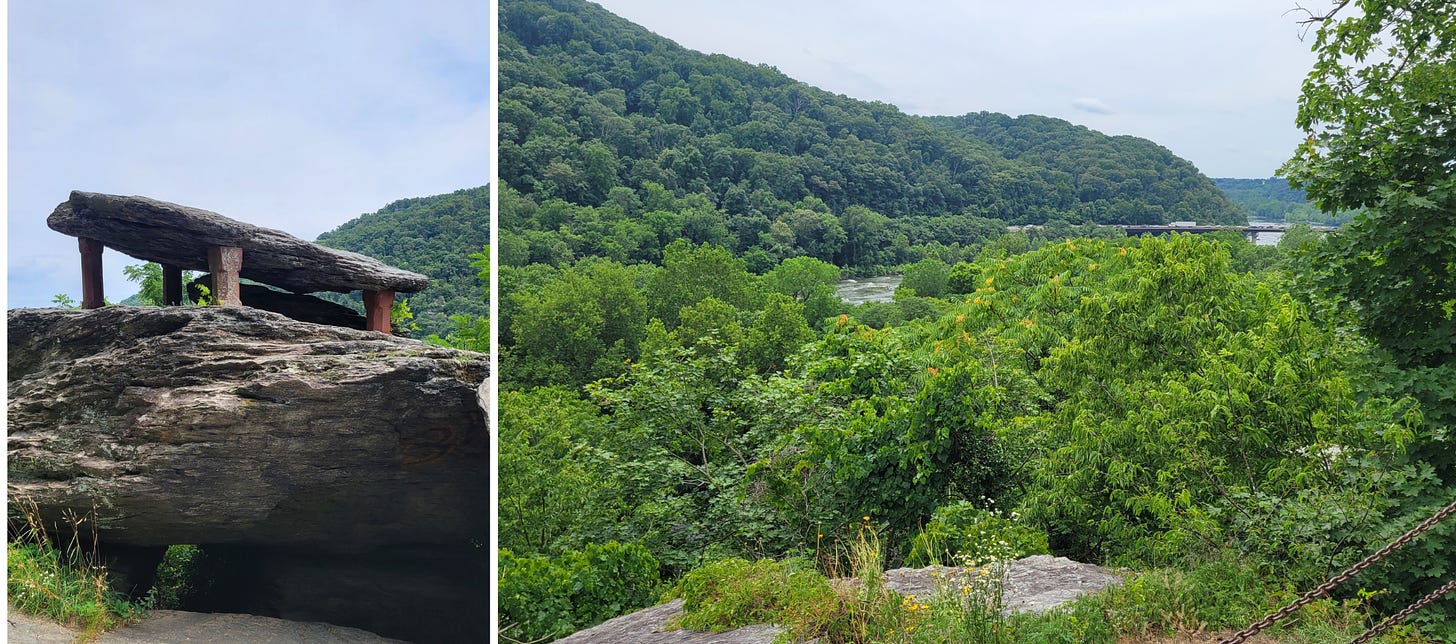
Scenic overlooks can be the best! Your description of Harper's Ferry makes me want to visit, too.